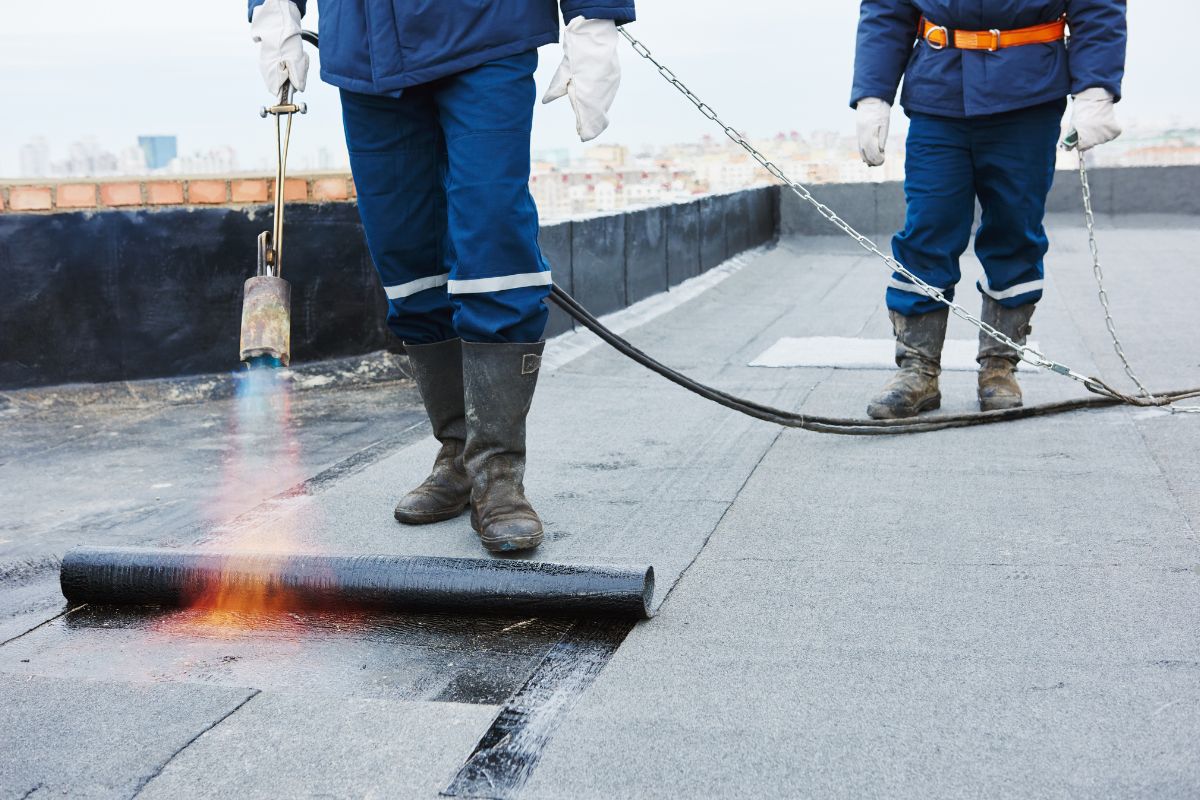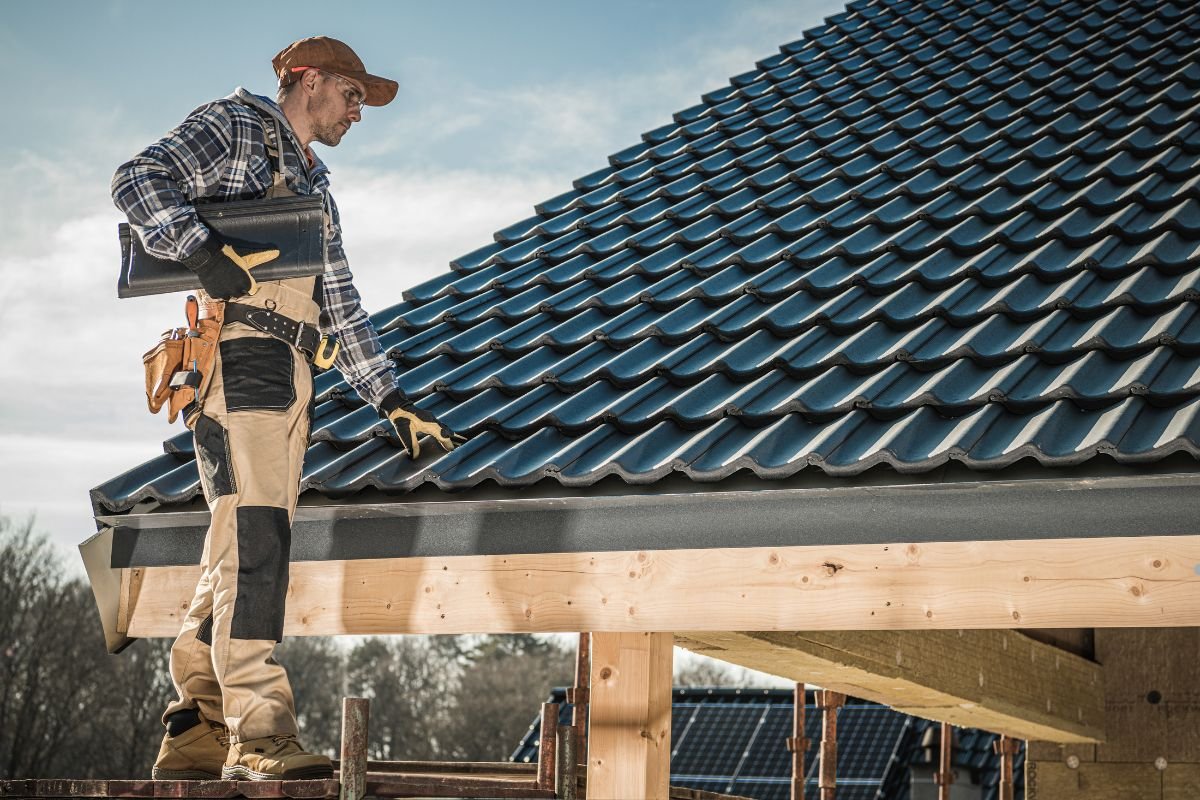
Tired of sky-high energy bills and a sweltering home? Reflective roof coatings offer a simple yet effective solution. By reflecting sunlight and reducing heat absorption, these coatings can significantly lower your cooling costs, extend the life of your roof, and create a more comfortable living environment. This guide will walk you through everything you need to know about reflective roof coatings, from understanding how they work to choosing the right one for your home.
What Are Reflective Roof Coatings?

Reflective roof coatings are specialized materials applied to existing roofs to reflect sunlight and reduce heat absorption. Unlike traditional dark-colored roofs that absorb a large percentage of solar energy, reflective coatings bounce much of that energy back into the atmosphere. This keeps your roof cooler, which in turn reduces the amount of heat transferred into your home. Learn more about our roofing services.
Types of Reflective Roof Coatings:
- Acrylic Coatings: These are a popular choice due to their affordability and ease of application. They offer good reflectivity and are suitable for various roof types.
- Silicone Coatings: Known for their excellent durability and resistance to ponding water, silicone coatings are a great option for flat or low-sloped roofs.
- Elastomeric Coatings: These coatings provide excellent flexibility and can expand and contract with the roof, making them ideal for roofs that experience temperature fluctuations.
How Reflective Roof Coatings Work:
The effectiveness of a reflective roof coating is measured by its solar reflectance (the percentage of sunlight reflected) and thermal emittance (the ability to radiate absorbed heat). Coatings with high solar reflectance and thermal emittance values are the most effective at keeping your roof cool. This technology is at the heart of the cool roof concept.
Ready to experience the benefits of a cooler home? Call us today for a free consultation!
Why Choose a Reflective Roof Coating? The Advantages
The benefits of investing in a reflective roof coating go far beyond just keeping your home cooler. Here’s a breakdown of the key advantages:
- Energy Savings and Lower Bills: This is perhaps the most significant benefit. By reducing the amount of heat entering your home, your air conditioner doesn’t have to work as hard, leading to substantial energy savings and lower energy bills.
- Extended Roof Lifespan: Excessive heat can cause roofs to degrade and crack over time. Reflective coatings protect your roof from these damaging effects, extending its lifespan and reducing the need for costly replacements and roof maintenance. Learn more about roof maintenance.
- Improved Comfort: A cooler roof translates to a cooler home. You’ll experience a more comfortable living environment, especially during the hottest months of the year.
- Environmental Benefits: By reducing energy consumption, you’ll also lower your carbon footprint and contribute to a more sustainable environment. Cool roofs help mitigate the urban heat island effect, reducing overall temperatures in urban areas and contributing to a reduced carbon footprint.
Reflective Roof Coatings: What’s the Investment?
Understanding the costs associated with reflective roof coatings is crucial for making an informed decision.
- Installation Costs: The cost of installation will vary depending on the type of coating you choose, the size and complexity of your roof, and the labor costs in your area.
- Long-Term Savings: While there is an initial investment, the energy savings payback you’ll experience over time can offset the cost. Many homeowners see a significant ROI (Return on Investment) within a few years.
- Factors Affecting Cost: The final cost depends on several factors, including roof size, the type of coating material used, and the complexity of the installation. Check for cool roof incentives in your area, as some states and municipalities offer rebates for energy-efficient roofing solutions.
Applying Reflective Roof Coatings: A Step-by-Step Guide

While some homeowners may consider a DIY approach, professional installation is often recommended to ensure optimal performance and longevity.
- Preparation is Key: Before applying any coating, the roof must be thoroughly cleaned and repaired. This may involve removing debris, patching cracks, and addressing any underlying issues.
- Application Techniques: Reflective coatings can be applied using various methods, including spraying, rolling, or brushing. The specific technique will depend on the type of coating and the manufacturer’s instructions.
- DIY vs. Professional Installation: While DIY installation may seem appealing, it’s important to consider the potential risks and challenges. Professional installers have the experience and equipment to ensure a proper application, which can impact the coating’s performance and lifespan. Consider safety precautions if attempting DIY.
Maintaining Your Reflective Roof Coating: Keeping it Cool
Proper maintenance is essential for maximizing the lifespan and effectiveness of your reflective roof coating.
- Regular Inspections: Inspect your roof regularly for any signs of damage, such as cracks, blisters, or peeling.
- Cleaning Tips: Gently clean your roof periodically to remove dirt, debris, and algae. Use a mild detergent and a soft brush to avoid damaging the coating.
- Repairs and Touch-Ups: Address any minor damage promptly to prevent it from escalating into more significant problems. Touch-up coatings can be applied to areas that have been damaged or worn.
Keep your roof cool and efficient! Call us for expert maintenance and repair services.
Selecting the Best Reflective Roof Coating for Your Home
Choosing the right coating and contractor is crucial for ensuring a successful project.
- Assessing Your Needs: Consider your climate, roof type, and budget when selecting a coating. Different coatings are better suited for different environments and roof types.
- Researching Coatings: Research different brands and types of coatings to find one that meets your specific needs and budget. Look for coatings with high solar reflectance and thermal emittance values.
- Finding a Qualified Contractor: Choose a contractor with experience installing reflective roof coatings. Ask for references and check their credentials to ensure they are qualified and reliable.
Your Reflective Roof Coating Questions Answered
How long does a reflective roof coating last?
The lifespan of a reflective roof coating can vary depending on the type of coating, the quality of the installation, and the level of maintenance. However, most coatings can last for 10-20 years.
Can I apply a reflective roof coating to any type of roof?
Reflective roof coatings can be applied to a variety of roof types, including asphalt shingles, metal roofs, and flat roofs. However, it’s important to choose a coating that is specifically designed for your roof type.
Will a reflective roof coating void my existing roof warranty?
It’s important to check with your roofing manufacturer to determine whether applying a reflective coating will void your existing warranty.
Still have questions? Contact us and we’ll gladly provide you with the answers you need.
Reflective Roof Coatings: A Smart Investment for a Cooler Future
Investing in a reflective roof coating is a smart way to improve your home’s energy efficiency, extend the life of your roof, and create a more comfortable living environment. With the rising cost of energy and the increasing demand for sustainable building solutions, reflective roof coatings are a valuable investment for homeowners looking to save money and reduce their environmental impact. Contact us today to learn more about how a reflective roof coating can benefit your home!
